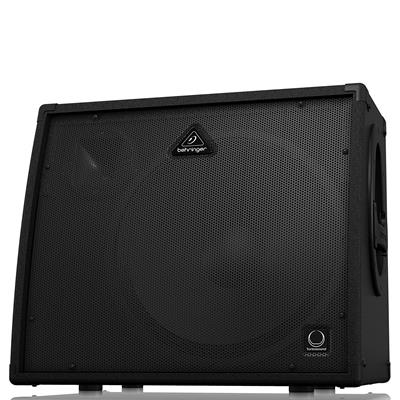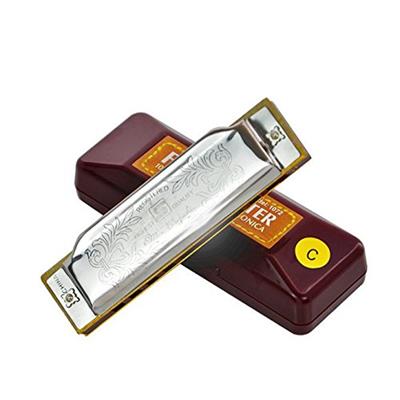| Build Quality: |  |
| Hardware: |  |
| Electronics: |  |
| Sound: |  |
| Value: |  |
| Average: |  |

Pros:
- Excellent build quality and extremely durable chassis
- Great sound and tone shaping options
- Affordable
- Easy to use
Cons:
- Does not have any on-board effects
- Might not be versatile enough for some
As the time passes by and you continue to purchase various devices, there comes the moment when you stop for a sec and wish for something that could do it all. Sometimes the jack-of-all-trades can actually be the master of all. Peavey Vypyr VIP 3 is exactly that sort of device. It has enough power for gigging, but can be toned down for home practice as well. Plus, it has a lot to offer, meaning that it will thin out the cluster of your excessive devices. I think you are intrigued enough, so I will just get right to the point and dive into discussing all the perks of this little fella. Let’s get started!
Features
I will start by saying that VIP3 is the most powerful member of the VIP family, delivering 100 watts of power with a single 12” Custom Voiced Heavy Duty Speaker. This bad boy features Peavey’s signature Variable Instrument Performance functionality, meaning that it can recognize the nature and strength of your guitar (acoustic, electric or bass) and act accordingly. Not only that, but it also comes with PowerSponge variable power, which can decrease the wattage to merely 1 watt, creating the perfect space for home practice.
VIP3 packs a gigantic range of sonic possibilities by providing you with 400 amp accessible presets 10 instrument models, 12 amp accessible stompbox models, 36 onboard amp models, and 6 bass amp models. 6 acoustic amp models and 25 onboard effects. And there is more: this combo has an onboard looper (accessible with optional Sanpera I or Sanpera II foot controllers), enhanced chromatic tuner, as well as tap tempo functionality. I will not overwhelm you with inputs and outputs, just know that it has everything you would need for the purpose of this amp. That’s it.
Controls
From all the features we have listed, you might have concluded that the control panel of VIP3 would be an over-complicated jumble of knobs and controls. However, Peavey decided to be minimalistic and employed a multi-functional approach.
The first knob you will see is the Presets. This fella scrolls through 400 presets that are distributed within 4 banks (C being for acoustic guitar and D dedicated to the bass). The names of the presets are shown on LCD display, which simplifies the process of tweaking. Below the mentioned display you will see three encoders: Instrument/Stomp, Amplifiers, and Effects. Each of them toggles between the functions indicated by their name. Then we have the Pre-Gain, which adds strength to your signal and distorts your sound; a three-band EQ with Low, Mid and High knobs which are in charge of the specific frequency ranges; Post-Gain, which modifies the volume of individual presets.
These five knobs can have different functions in Edit mode: Pre-Gain controls the Parameter 1 of the effects or stompbox, Low manages the Parameter 2, Mid changes the feedback of the Delay, High adjusts the level or the amount of the Delay, while Post-Gain controls the amount of Reverb. And finally, we have the Master Volume which sets the level of the overall output, tap tempo button, as well as a looper indicator. That was a mouthful, ha?
Peavey Vypyr VIP 3 Sound
Now, the sound of VIP3 is quite powerful and, thus, distinctive. Due to the TransTube technology, the tones of the unit have a unique character. If I were asked to describe the sound in one word it would undoubtedly be versatility. Instrument emulations allow you to tailor your amp to your guitars and create an elaborate tone (with some funky options such as Electric Violin, Resonator, Baritone, and so on), amp simulations give you the option to employ some of Peavey’s classics, such as Classic, XXX, 6505+ and 6534+ along with American and British amplifiers. When it comes to effects, the reverb is really smooth and saturated, the delay sounds amazing, while high-gain presets have all the growl and girth you ever wished for. Now you know what I meant by stating that the sound of VIP3 is versatile.
Conclusion
To conclude everything said above, we can simply say that VIP3 is amazing. It is affordable and flexible, has enough power for small venues, offers a wide range of sonic possibilities and delivers the ethereal sound quality. It is true, though, that the initial tweaking will take some time, because you have to figure out how everything works, but once you do that, you will unleash the real beast hidden in this amplifier. The only thing left to do is take your instrument, plug it in VIP3 and start rolling. Good luck!
Click here to view more from 5 Best Guitar Amps Under 300.






Thanks for the review. How does it stack up against the Positive Grid ‘Spark’ amp please?
They are different kinds of amps. This is an older amp than a Spark. But Peavey is a 100W combo that can be used on a gig. And Spark is just for practicing.